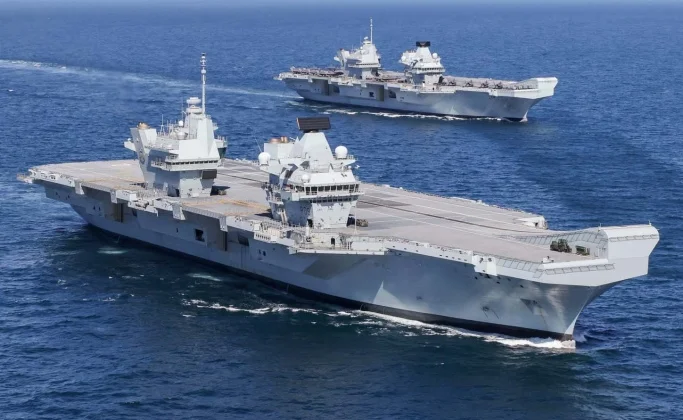<p >The British Ministry of Defence on November 20 publicised plans for a range of spending cuts which would affect the capabilities of the Army, Navy and Air Force, with the new Labour government expected to continue to consider further cuts following years of austerity under the preceding conservative administration. The new cuts coincide with a rise in scrutiny towards the country’s two newly commissioned aircraft carriers, which have demonstrated major vulnerabilities in recent exercises. A defence source informed the local paper The Times regarding the carriers’ performance that the ships had been put through a “whole load of scenarios” simulating a large scale conflict, which tested their “ability to survive” against an “overwhelming force.” The war games involved both ships of the class – HMS Queen Elizabeth and HMS Prince of Wales. An informed informed the Times: “in most war games, the carriers get sunk,” with the ships being particularly vulnerable to missiles.&nbsp;This bodes particularly poorly for their survivability at a time when China, NATO’s most powerful potential adversary, leads the world in its anti ship missile capabilities, while Russia and North Korea make significant advances.&nbsp;</p><p ><img src=" title="F-35B Takes of From Queen Elizabeth Class Carrier"></p><p >The Times was among several local papers to highlight that at a time when means of cutting spending were being sought out, discussions were underway about the continued utility of a two-carrier fleet. “The prospect of scrapping at least one carrier to help with financial problems was raised,” it reported of a recent high profile meeting. A particular source of concern regarding the fleet is that the United Kingdom is not in a position to afford anything near the required complement of F-35B fighters for the two carriers, with the stealth aircraft being the most expensive fighters in production anywhere in the world. The F-35B is the only fighter class capable of deploying from the ships due primarily to their lack of arresting gear for conventional landings. The lack of fighters forces the Navy to accommodate high operational costs without gaining anything approaching full utility from the vessels.&nbsp;</p><p ><img src=" title="Queen Elizabeth Class Carrier and Type 45 Destroyer"></p><p >A further major issue remains that the ships have been particularly highly prone to accidents, with HMS Queen Elizabeth<a href=" > forced to miss</a> upcoming joint NATO drills due to an unexpected “issue” in one of its propeller shafts. Other issues have ranged from&nbsp;<a href=" >flooding</a>&nbsp;to&nbsp;<a href=" >fighter crashes&nbsp;</a>and a range of other issues that have seriously hampered their&nbsp;<a href=" >operational readiness</a>. HMS Prince of Wales was in 2023&nbsp;<a href=" >cannibalised for parts</a>&nbsp;to keep HMS Queen Elizabeth sailing. Navy reports have frequently highlighted issues such as&nbsp;<a href=" >insufficient training</a>&nbsp;for carrier operations, which places personnel at risk.&nbsp;The carriers’ primary escort the Type 45 Class destroyer has also become particularly notorious for its poor reliability, and in 2021 the number of ships out of action reached 83 percent with&nbsp;<a href=" >only one of the six&nbsp;</a>ships capable of operating. The ships have suffered from far greater reliability issues and&nbsp;<a href=" >significantly lower versatility&nbsp;</a>than destroyers in the United States, China, Japan and South Korea, while carrying only half as much firepower or less.&nbsp;Britain thus lacks either the destroyer numbers or the fighter numbers to effectively operate its two aircraft carriers. Options for retiring one aircraft carrier, including leasing it to the U.S. Navy, or offering it for sale to the Indian Navy after adding arresting gear, have been considered in the past.&nbsp;</p>
Poor Performance of British Aircraft Carriers in Simulated Combat Fuels Calls For Retirement

